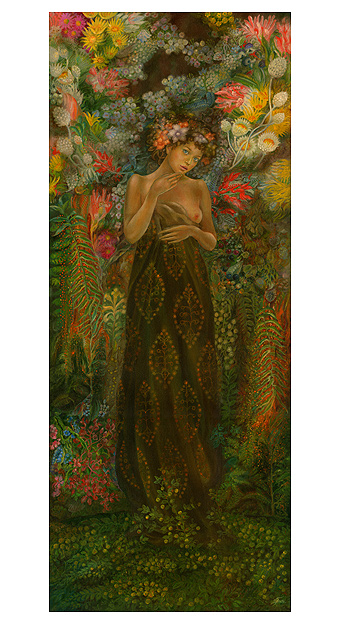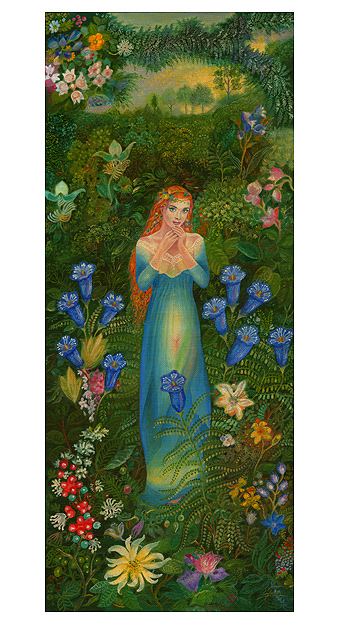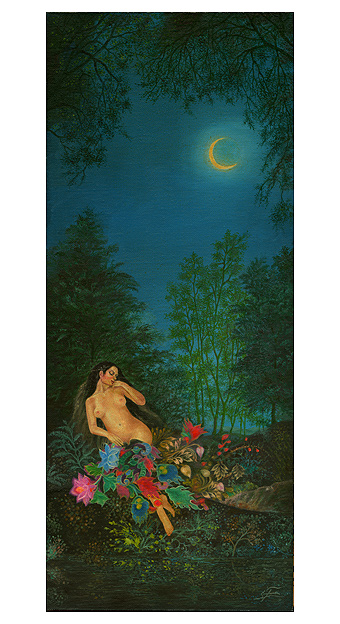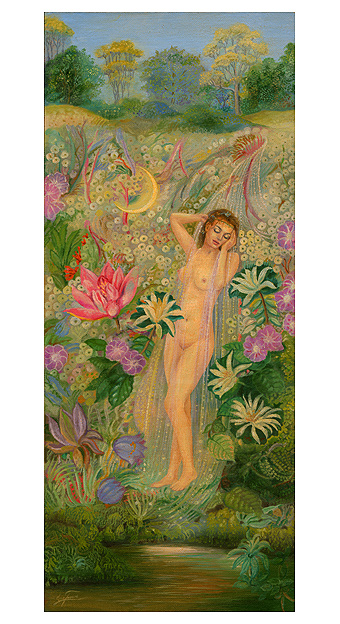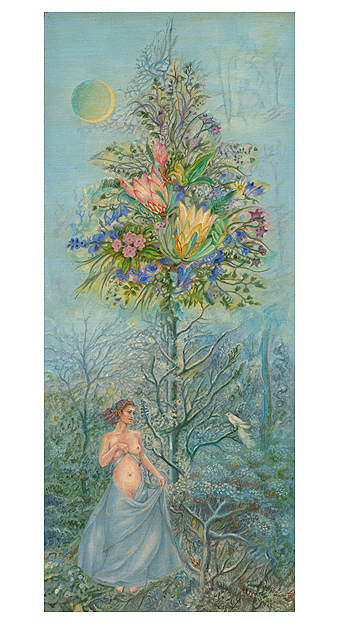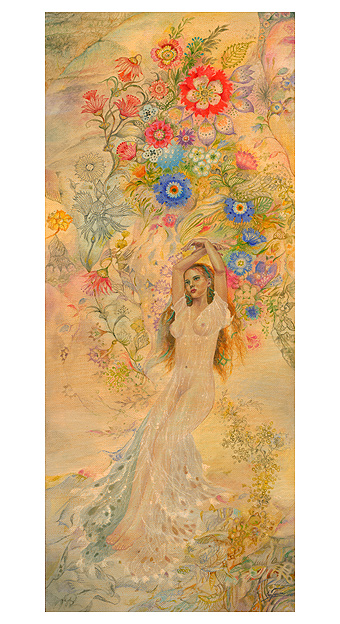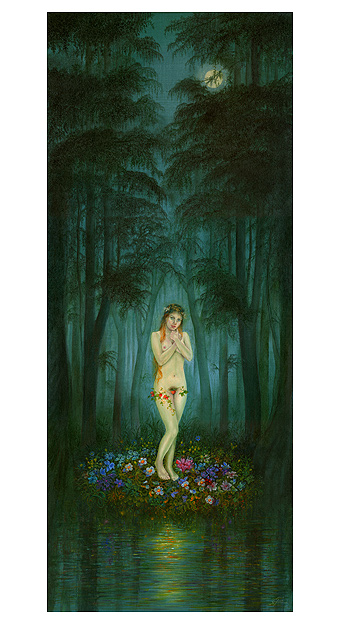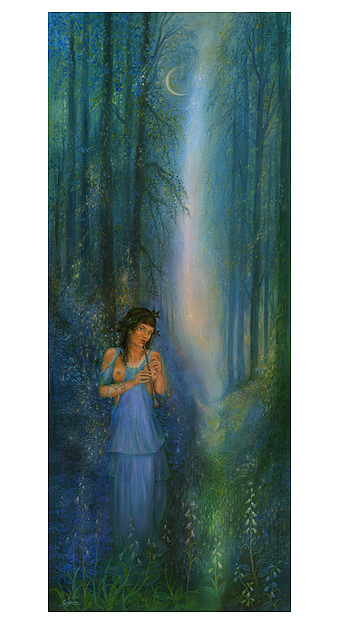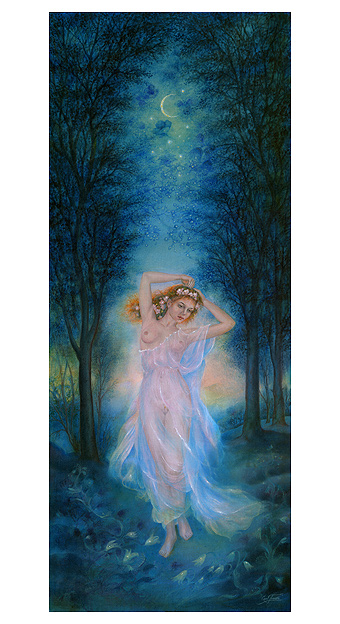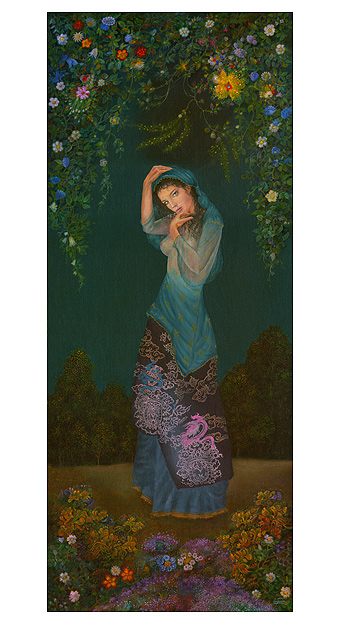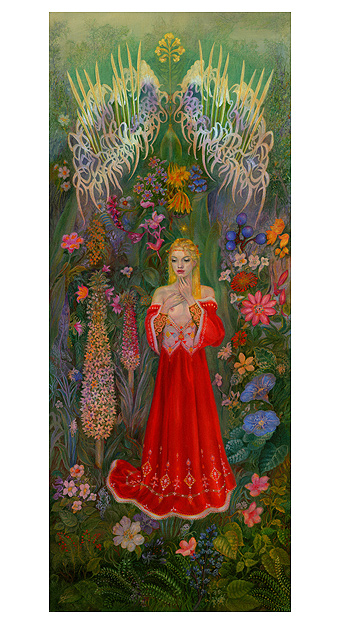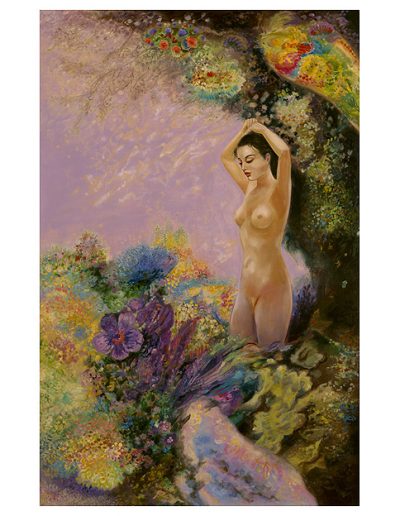Ich bin so wild nach deinem Erdbeermund
(François Villon)
“Lolitas, nymphets and nymphs have populated stories all over the world since primeval times. They are no new phenomenon but are the heroines in some of the most beautiful and tender stories from the canon of world literature. The more vulgar part of the public will continue to see these stories from their own vulgar perspective: just spreading slander without bothering to read them. The repulsive villains will continue to commit their repulsive crimes. But the innocent, beautiful, gentle, harmless nymphs will continue to lead their existence on the more respectable fringes of literature and society.”
Dmitri Nabokov
(Son of Vladimir Nabokov)


Katinka Trauth und Sascha Trauth
Presenter
All photos by Heiner Morgenthal
Excerpts from some of the speeches:
Dr. Ariane Martin
Specialist Editor in ZDF’s Central Editorial Office for Culture and Science

” […] “Gero Trauth’s pictures are different. But what makes them so unusual, so unique?
Initially, it is the distinctive style of the artist that strikes you: the way he handles his brush, constructs his picture, selects his colours and forms and, last but not least, the way he presents his delicate female figures in a fairy-tale ambience. The pictures in this exhibition represent the original conception of Eros: sensual, creative and exotic love. These pictures can indeed be called erotic.
They are erotic because their genius, Gero Trauth, is a lover: a lover of beauty, a lover of grace, a lover of sensuality and also a lover of femininity. What Gero has painted is not only erotic though; it is also exceedingly poetic as Gero Trauth is also a poet: a subtle spirit who gains his conceptual designs from the infinitely bountiful ocean of the spirit – or “poetry” as I like to call it. What a poet expresses with words, Gero Trauth expresses with his brush and with colours. Thus a cycle like this in which word and picture, literature and art bear a close relation to each other again and again, engage in dialogue and interweave becomes inevitable. […] The artist acknowledges the female by placing her in a prominent position. He presents her but does not exhibit or expose her. Her physical intensity, as well as the secret of her soul, reside behind a veil. […]”
Wolfgang Bosbach
Chairman of the Bundestag Committee on Interior Politics

[…] “Therefore it is with great reverence that I enter these sacred halls. […] You will also have your own very personal impression of politics. How does it present itself? Occasionally as a rather abstract art form – I agree with you there! For some people, politics seems to be like naïve art; for others occasionally like decorative art. […] Thus we [politicians] wonder about art and civilization day in and day out, though at first glance people would not necessarily expect this from us. There is one particular sentence I have memorized – I came across it, by the way, during an inspection of the German Bundestag when the artworks on display there were introduced to us in detail – when I said to a Professor: “I can’t judge if a piece of art is good or not.”
(This, I admit to you, applies particularly to the works of Joseph Beuys which we have on display in the building. You will guess what’s coming now: we have cordoned off a large area round those Beuys pictures to ensure that everybody realizes that they are in fact works of art.)
“I can merely say whether I like a piece of art or not, not whether it is good or not.”
There and then he gave me an affectionate hug and told me that this really wasn’t a problem because a piece of art was only good if it touched one’s heart.
In this spirit I would like to say that the person whose heart is not touched by these [Gero’s] pictures, has a heart of stone. Having said this I wish you […] many visitors with soft hearts.
Prof. Dr. Joseph A. Kruse
Literary scholar and long-standing Director of the Heinrich Heine Institute in Düsseldorf

[…] “… because you learn so much. You learn from the various ways Gero Trauth looks at things. […] But let us again quickly leave these dark sides of our social existence in order to prevent them from suppressing the optimism and naturalness of the brighter aspects – in their – hopefully – overwhelmingly superior majority. Because everything which is portrayed as “Reigen” (Round Dance) by Arthur Schnitzler and “Frühlingserwachen” (Spring Awakening) by Frank Wedekind or “Im Schatten junger Mädchenblüte” ( In the Shadow of a Young Girl in Flower) by Marcel Proust, reaches inside the experience of growing-up and eroticism, evokes dignity and melancholy as well as maturation. Such processes and their artistic interpretation are thus evidence of humanity’s history of civilization. They are a poetic expression of how much life with all its abundance and promised opportunities is further enriched by young and therefore “sweet”…. forgive me for using this frequently over-used adjective…love.” […]
Prof. Dr. Karl Ludwig Pfeiffer
Literary, Media and Culture scholar

“At first glance, Gero Trauth’s pictures seem to do the same by presenting love in a graphic form impossible in poetry yet familiar in its motifs and the homely ambience of moon, woods, flowers and pond.
This is even exceeded by the – here I prefer to say – “unseen” rather than “unheard of” precision and clarity with which he draws the outlines of his evidently erotic figures, a clarity which keeps us under the spell of the omnipresence and unlimited power of love. The more we look though, the more evasive these figures become thus gaining an unexpected exoticism. Let us therefore examine them as closely as possible, possibly even now and again with a magnifying glass – as I have already ruthlessly done – in order to admire the precision of the lines even more. This though has the paradoxical effect of blocking rather than paving the way to the souls of these creations presented to us in such beautiful outlines and shapes.
If we still want to carry on interpreting, we might even have to add that in the faces of the nymphs and Lolitas you find promises as well as scepticism. But here I may have gone too far. Perhaps we should say instead: “Through the wonderful clarity of the lines, particularly as regards the mouths of the nymphs, we become aware of both the omnipotence and mystery of love.”
Beate Schmies
Director of the WDR Studios in Siegen

[…] “Gero Trauth has faith in himself. He radically dispossesses himself of the trends of modern art and withdraws himself from rough reality as we know it. He flees from our world and creates (for himself) his own in which he lives together with wonderful nymphs equipped with perfect bodies in flowery meadows. […] Eroticism certainly plays a prominent role, but likewise romanticism.[…] Not only his pictures but also the poems Gero Trauth has chosen for each of his pictures speak about romanticism. This slim, ascetic-looking man has a vivid imagination. […]
Gero Trauth dared to remain true to himself, did not pursue every current trend, did not constantly try out every novel idea. His style of painting has not changed from his time as a student up to the present day. He was in a kind of ghetto then, he says, and he tried again and again to free himself from this ghetto […] several times he remarked: “I don’t understand modern art. I have no affiliation with “freeing-yourself” exercises.” One could therefore conclude that Gero Trauth is a prisoner, a prisoner of his art in the worlds which he creates with his art. But he […] relishes being a prisoner. He even chose his imprisonment himself and savours it. […] Gero Trauth does not like grey reality; he even rejects it. By painting beautiful things, he, as it were, beams himself away from reality, away from all things bad. Above all, he would like to transfer the idyllic world of his pictures to the ………… evil of the real world. […] Just as he himself says, Gero Trauth paints beauty in order to escape from ugliness and wickedness.” […]
Delphine Guévar
Soprano/Paris
Daniel Isoir
Pianist/Rouen

Works presented:
Songs by Joseph Haydn
O tuneful voice, The Wanderer,
Spirit song, Mermaid song
Arias from Georges Bizet’s “Carmen”




